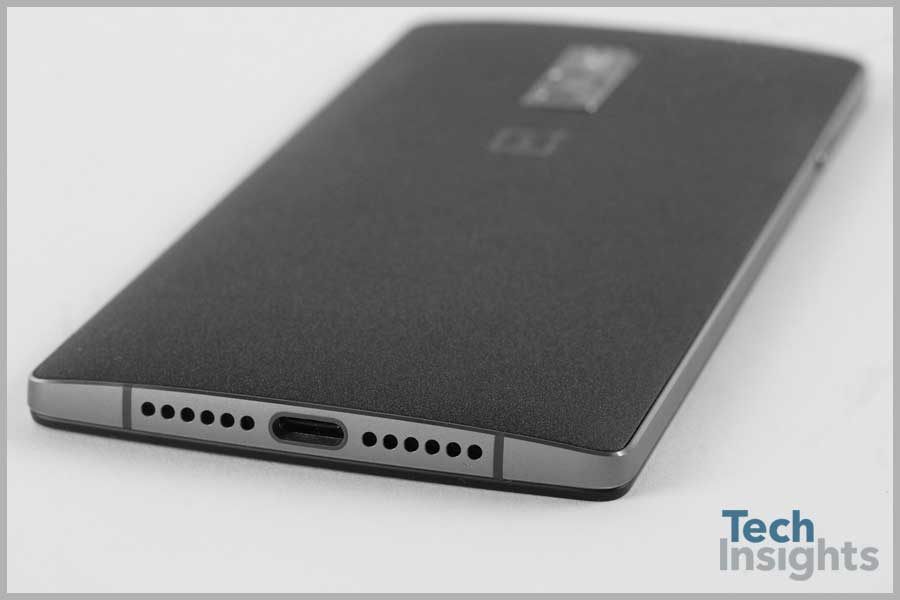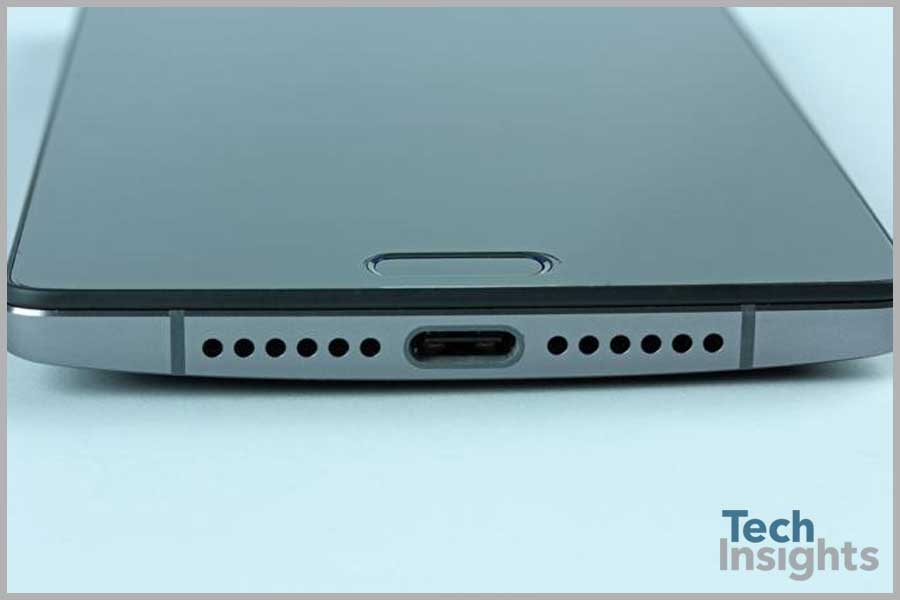Posted: August 21, 2015
Well, that happened. We found ourself doing not ONE, but two, quick turn teardowns on the same day - the OnePlus 2 and the Samsung Galaxy Note 5. We couldn’t have done it without the full support of our teams, both here in the US and across the Atlantic in Europe, so a big ‘Thank you!’ to all those involved.
Teardowns are a funny thing; with the right tools and a genuine sense of curiosity just about anyone can disassemble a device. What sets our teardowns apart is how much data we capture - typically, over 4000 data points per device, and that doesn’t include photos. So for us to do a quick turn teardown and to do what we usually do over weeks in just one day and deliver a cost estimate usually very close to what our Deep Dive will finally reveal is a fun and challenging feat.. How close are our QTT estimates? Really, really close - just compare the final estimates for the Apple Watch and the Samsung Galaxy S6 to what we estimated in our QTTs for both devices.
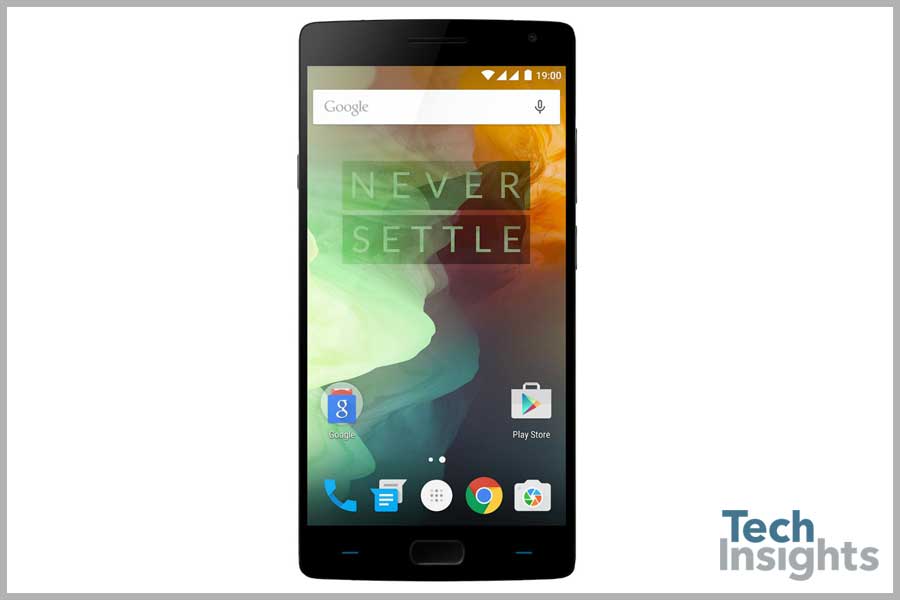
OnePlus 2
The OnePlus 2
First, who is OnePlus? In a short, OnePlus is a relatively young Chinese OEM, started by Oppo vice president Pete Lau and another partner. When the OnePlus One device hit the market back in 2014, we took it to our lab and performed our Deep Dive analysis on it.
The OnePlus One in its own right warranted a detailed analysis not only because it had a lot of media, but because it had some very impressive specifications, including support for the budding TD-LTE bands and established FD-LTE bands combined. The OnePlus One ran on the Snapdragon 801 processor, had both 2.4 and 5 GHz support for WiFi, NFC, Bluetooth 4.0, and the list of features on. To sum it up, the OnePlus One was no slouch, and the consumers expected the OnePlus 2 to be better than its predecessor.
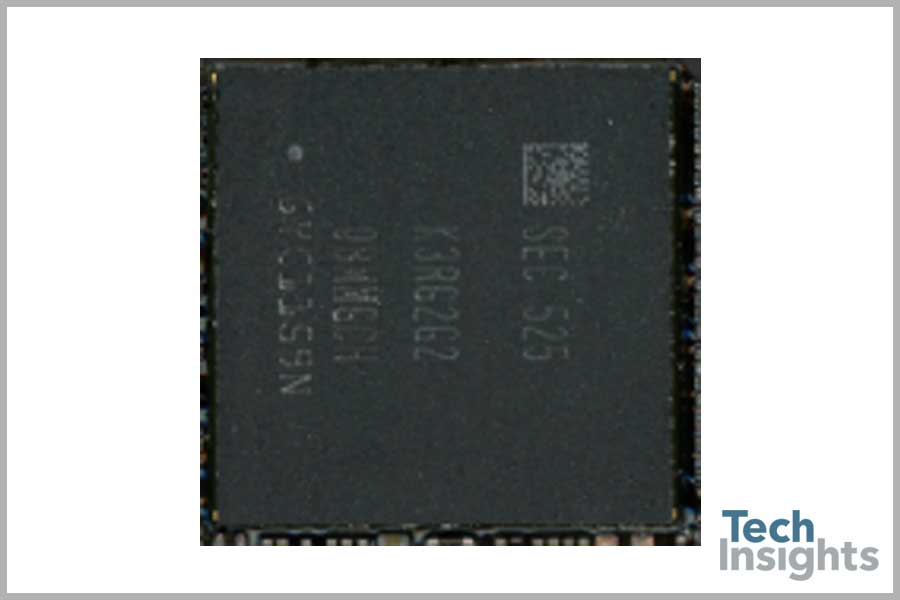
Snapdragon 810 processor
We “C” It
First off, the OnePlus 2 upgrades from its predecessor to the Snapdragon 810 processor. Another improvement is the use of the LPDDR4 memory from the OnePlus One LPDDR3, with a slight bump in memory size as well, going from 3GB (LPDDR3) up to 4GB in the OnePlus 2. The LPDDR4 memory is one from Samsung, the K3RG2G20BM-MGCH.
Another ‘up-to-date’ addition, is the use of the new USB-C type of connector port and a fingerprint sensor, too.
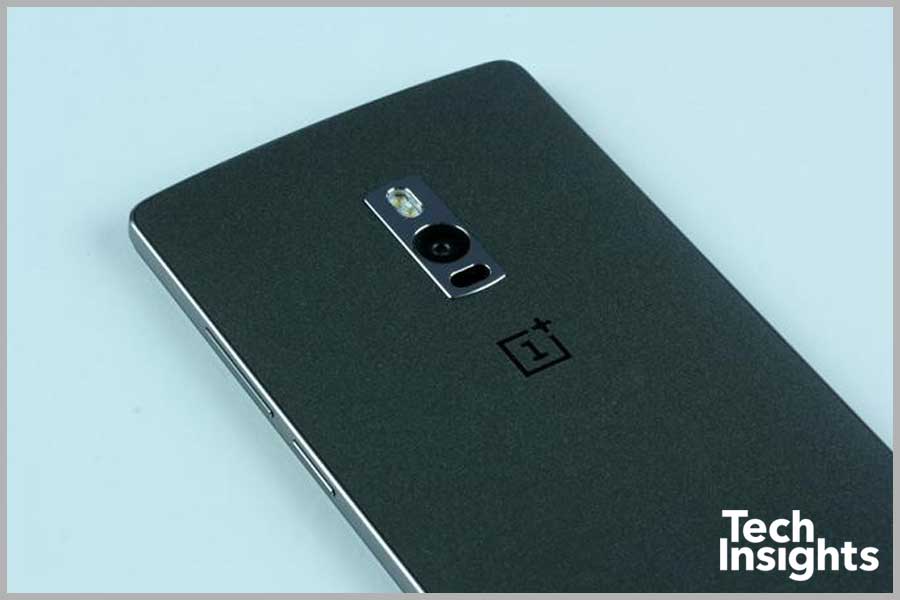
OnePlus 2 13MP Camera - Same as the OnePlus One
Some Concessions
In order to keep costs low, OnePlus kept the cameras the same as in the OnePlus One, using a 13MP for the main camera on the back and a 5MP on the front.
Cost Estimate
OnePlus also kept the same 5.5” TFT display but left out the NFC for the OnePlus 2. In the end, the comparisons between the two devices looks like this:
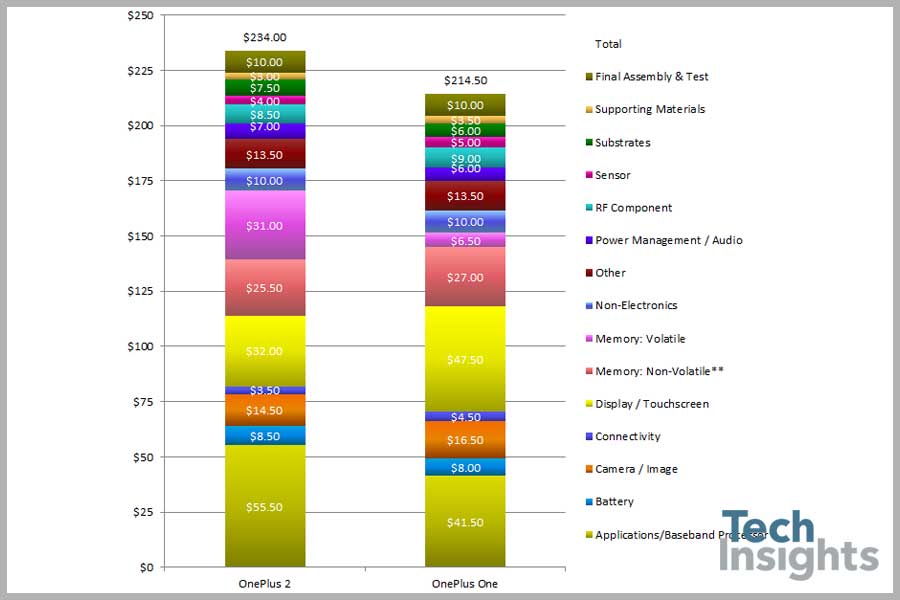
OnePlus 2 vs OnePlus One
As you can probably see from the chart above, we are assuming the same with the display costs coming down over time, just as we did in the quick turn for the Samsung Galaxy Note 5 and Galaxy Note 4 displays. However, the total savings was not enough to keep the OnePlus 2 from having a larger BoM costs over the OnePlus One - the new Snapdragon 810 and memory ICs quickly syphoned those savings up.
On Another Note - OnePlus 2 vs Samsung Galaxy Note 5
Since we did both devices on the same day, we naturally had to compare them, and it was kind of nice not to bring in Apple when doing a comparison for a change.
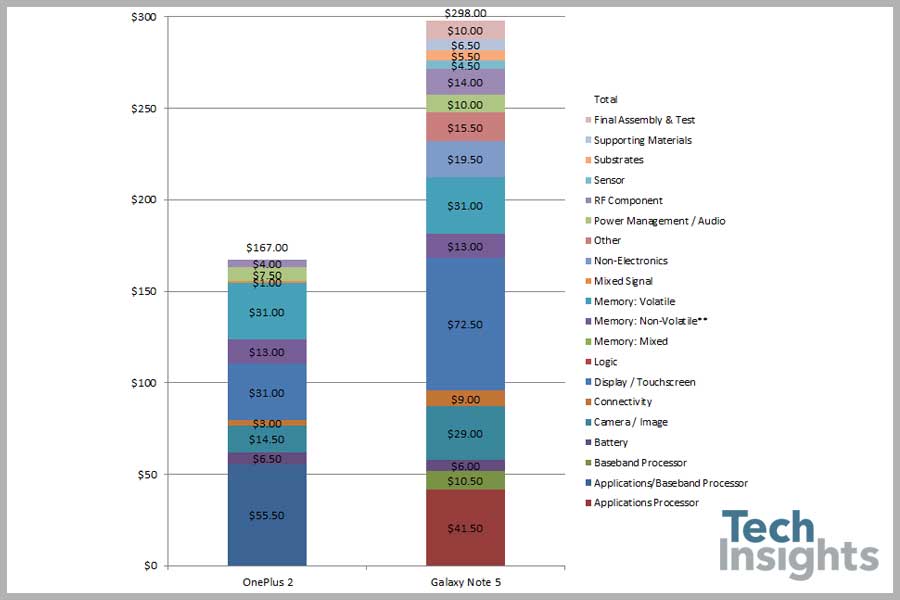
OnePlus 2 vs Samsung Galaxy Note 5
An obvious difference in BoMs - but when you look at the combined costs of the separate applications processor and the baseband processor on the Galaxy Note 5, the costs in the applications and baseband functions for both devices are almost the same. The most noticeable difference is seen in the display costs between the two devices - with the Note 5 over double that of the OnePlus 2. The difference is not all attributed to the slightly larger size of the Note 5, but more because of the display type and the addition of the digitizer used for the S-Pen feature in the Note 5.
And With That
Both device estimates here are slightly over half of what each device retails for, so both should be okay on the margins point of view. So if in theory they have the same opportunity for margins, the trick will be all about the base - the China base that is. If OnePlus continues to garner the excitement it has been not just in China but now Europe and the US, OnePlus looks as if they can be a serious contender if they continue to deliver devices with features and specifications which can challenge giants like Samsung and Apple.





